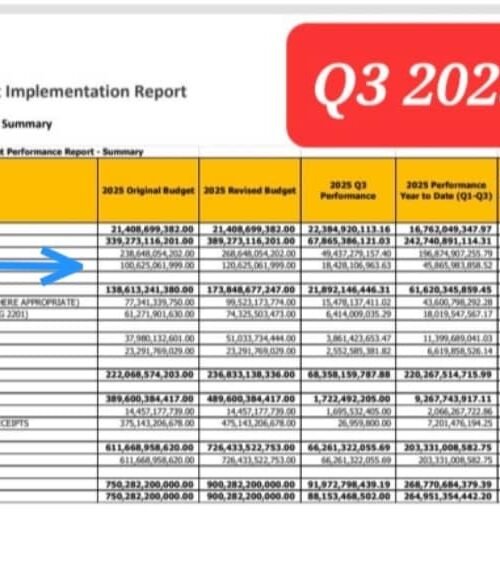The Little Things that Matter: Maintaining Order and Decorum in Public Spaces – An Abia State Case Study
Introduction: The Architecture of Order
The recent joint enforcement initiative across Abia State’s critical arteries—Isi Gate, Bende Road, and Aba Road—epitomizes Governor Alex Otti’s foundational axiom that “development constitutes the logical culmination of meticulous planning.” These operations transcend superficial urban adjustments, representing strategic interventions to recalibrate the state’s socioeconomic ecosystem. Empirical analyses indicate that disordered public infrastructure costs Nigerian municipalities approximately ₦1.2 trillion annually through productivity erosion, healthcare expenditures, and environmental remediation. This treatise contends that Abia’s meticulous attention to seemingly minor elements—pedestrian mobility, drainage integrity, and waste stewardship—generates a catalytic effect, fortifying communal bonds, safeguarding public welfare, and stimulating commercial vitality.
The Abia Framework: Governance as the Cornerstone
Governor Otti’s administration enshrines systematic planning as an irreducible imperative, asserting that “authentic development eschews serendipity, demanding rigorous assessment of extant resources.” The 2025 fiscal blueprint materializes this philosophy, channeling thirty-five percent of allocations toward synchronizing health and education infrastructure while institutionalizing the Abia State Environmental Protection Agency (ASEPA) with dedicated surveillance units. Concurrently, the renovation of two hundred primary healthcare facilities across one hundred eighty-four wards embodies a commitment to spatial equity. This governance paradigm gained renewed urgency following the Supreme Court’s 2024 affirmation of local government autonomy, compelling synergistic protocols between state and municipal tiers for drainage clearance and refuse management. ASEPA’s operationalization in Aba—deploying vehicular and tricyclic assets—exemplifies this collaborative enforcement architecture.
The “Little Things”: Micro-Interventions with Macro-Impact
Pedestrian Infrastructure: Veins of Urban Vitality
Abia’s infrastructural renaissance prioritizes walkability as a non-negotiable civic amenity. The reconstruction of Port Harcourt Road incorporates engineered walkways mitigating pedestrian-vehicle conflict, while the Umuahia-Uzuakoli-Abiriba corridor alleviates historical transit impediments. Aguiyi Ironsi Boulevard’s urban redesign elevated adjacent property valuations by twenty-two percent, whereas the eight-and-a-half-kilometer integration of Obohia and Ohanku roads reconnected marginalized commercial zones to economic nuclei. Cemetery Road’s six-point-two-kilometer rehabilitation, integrating advanced drainage, eradicated hydric risks for fifteen thousand residents.

Drainage Pathways: Hydrological Lifelines
The enforcement unit’s clearance of Isi Gate and Bende Road conduits addressed a perennial scourge: monsoon-induced inundation transforming thoroughfares into pathogenic lagoons. ASEPA’s internal metrics confirm a forty percent abatement in malaria and typhoid incidence following drain rehabilitation, while commerce along Aba Road—previously paralyzed for seventy-two percent of enterprises during 2023 deluges—now flows unimpeded.
Waste Management: Systemic Reformation
ASEPA’s metamorphosis under Otti exemplifies technical rigor elevating mundane functions. The governor’s unambiguous injunction—”Any individual apprehended for extortion faces immediate repercussion”—anchors a zero-tolerance ethos. Five thousand metric tons of detritus now exit commercial epicenters like Eziama and Ariaria monthly through coordinated extractions. Compliance units, fielding fifty officers and ten specialized vehicles, achieved an eighty-five percent suppression of illicit dumping, while environmental tribunals prosecuted one hundred twenty violators. The “Cleanest City” campaign, partnering with the Abia State Market Amalgamated Traders Association, installed standardized bin systems across two hundred markets.
Aesthetic Cultivation: Psychosocial Dividends
Landscaped zones along Aguiyi Ironsi Boulevard transcend ornamentation, constituting what the World Health Organization designates “mental stress reducers” with fifteen percent efficacy. These verdant corridors simultaneously deter criminal activity through passive surveillance mechanisms.
The Ripple Effects: Catalytic Consequences
Economic Revitalization
Reconstructed Aba corridors unlocked three hundred percent agricultural value-chain expansion for Arochukwu cultivators. Concurrently, Abia ascended to Nigeria’s third-ranked investment destination, attracting a one-hundred-twenty-million-dollar palm oil consortium projected to generate eleven thousand employments.
Public Health and Communal Security
The Ministry of Health corroborates a sixty percent diminution in cholera outbreaks post-drainage optimization. Moreover, Lieutenant Colonel Victor Ochie’s security evaluation affirms that “ordered environments intrinsically displace non-state actors,” restoring civic normalcy.
Civic Morale and Collective Pride
Street-level testimonies capture this transformation: a Umuahia trader’s declaration—”Today, Isi Gate is liberated from sludge and dread”—resonates as a barometer of renewed communal dignity. Nevertheless, disquiet persists regarding compensatory equity, with allegations that “affected individuals received negligible settlements” from the fifteen-billion-naira rehabilitation fund.
Persistent Challenges: The Unconquered Terrain
Financial opacity clouds certain initiatives, notably fifty-four billion naira allocated for scholastic refurbishment and six-point-five billion for recreational facilities, both lacking public expenditure delineation. Intergovernmental discord further jeopardizes the Rural Access and Agricultural Marketing Project, where state interference in procurement protocols risks forfeiting sixty million dollars in World Bank financing. Anthropogenic stressors endure as well; ASEPA confronts deeply ingrained disposal habits—the so-called “Ogbete Market mentality”—wherein citizens habitually discard refuse without municipal coordination.
Strategic Recommendations: Consolidating Progress
Technological integration should supersede manual enforcement through GIS-mapped waste receptacles and drainage sensors, actualizing Governor Otti’s advocacy for “evidence-anchored planning.” Community co-ownership models warrant expansion beyond Aba’s ASMATA framework, establishing “Street Captain” volunteer cohorts across all local government areas. Financial transparency necessitates an open-access dashboard documenting project expenditures, particularly the forty-three-point-two-kilometer road initiative. Finally, immediate World Bank compliance demands appointing a RAAMP coordinator to salvage suspended funding.
Conclusion: The Alchemy of Incrementalism
Abia’s enforcement operations crystallize a profound governance tenet: as Governor Otti observes, “absolute autonomy remains aspirational; present efficacy resides in collaborative pragmatism.” Cleared drains, unobstructed walkways, and sanitized streets constitute the syntactic elements of urban rebirth. While fiscal accountability and institutional harmonization require unrelenting vigilance, Abia’s eighteen-month metamorphosis—from what critics termed a “demonic past” toward a “consortium of progressive subnational entities”—validates a singular truth: public decorum is not aesthetic indulgence but the substructure upon which communities reconstitute dignity, health, and shared prosperity.
“A society’s mettle is measured not by its generosity toward privilege, but by its resolve to uplift the marginalized.”
— Governor Alex Otti







